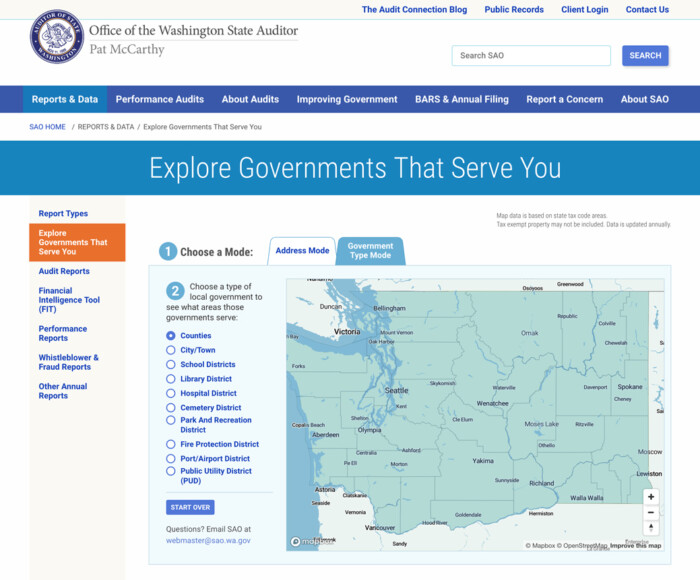A Website for Government, and for the People
Where do your tax dollars go? If you live in Washington State, now you have an easy way to find out. Gard just completed a new website for the Washington State Auditor’s Office that is making it easier for everyone to see their tax dollars at work.
We sat down with Julia Stoops, Gard’s web and digital director, to learn more.
Tell me about the project.
Washington’s State Auditor’s Office (SAO) is unique in the nation. Washington is the only state where one agency audits every single entity spending public dollars – every city, county, school district, library, port, fire department, and more has to submit financial reports annually to SAO. Essentially, SAO is sitting on a gold mine of data. This presented a great opportunity for SAO to be a resource to the public and earn their trust.
To help make that data easily accessible to the public, we developed a map that allows anyone visiting the website to drill down into different locations to see the revenues and expenditures of the various government entities that serve that location. If the website visitor wants to learn more, the map also delivers full audit reports from each of those governments.
But the general public only accounts for a fraction of the site’s total users. The thousands of government entities who must submit annual financial reports to SAO are also users, and they needed a better system to access SAO’s vast and ever-changing collection of rules and regulations. We developed an innovative feature that gives these government workers not just easier access to the rules, but also a way of annotating them and gathering them into customized collections.
What was the biggest challenge?
SAO frequently needs to update their rules for agencies submitting financial reports. Previously, agencies got those rules by downloading several dozen PDFs from the website. We learned from our audience research that often, staff at local governments were printing those PDFs to make notes on them and mark them up with Post-Its. The information in their paper copies quickly fell out of date, and they risked submitting improper financial reports.
To solve this problem, we custom-built an interactive system that gives government users access to the rules in their own private document with their own notes and flags. And when SAO updates the rules, the updates appear in every user’s document.
Understanding what people needed in this very specific usability situation was a really good challenge. Now we’re looking forward to testing the system over the next few months to understand how well it’s serving the purpose and how it can evolve.
How did this project help you develop future government websites?
This project showed me that we can think outside of the box for a government website. It doesn’t look very “government-y” – and we really made it for multiple different user types. We invited the general public in, and that’s a big differentiator because a lot of government sites are not like that. The staff at SAO truly believe that information is power, and they wanted to equip the citizens of Washington with information in an easy, inviting way.



